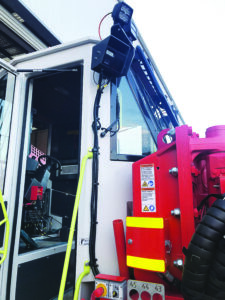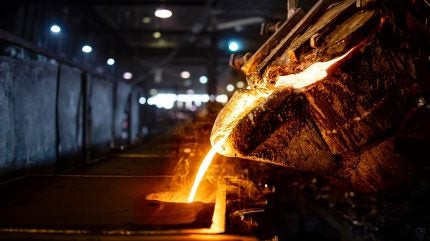The ‘Awareness’ collision detection, area denial and driver awareness system was created by Auto Control Systems using ifm 3D camera and control technology, with the aim of saving lives firmly in mind.
According to a 2019 report from the WA Department of Mines, Industry Regulation and Safety, reversing is the vehicle activity that accounts for most collisions in the state’s mining industry.
ifm efector and Auto Control Systems (ACS) are two companies that recognise this risk and wish to eliminate it, and that’s why they came together to create the ‘Awareness’ collision detection and driver awareness system.
The idea behind the new system was to provide vehicle operators with an extra set of eyes to improve safety and save lives in underground mining environments.
“The system protects zones or areas around critical and dangerous work areas of the individual machinery,” ACS business development manager Jeff Jasson told Australian Mining.
“In the case of drilling, it creates an exclusion zone at the front end of the machine where the drilling is taking place and alerts the operator if there’s anyone in that area by identifying reflective material on the on the mandatory hi-vis attire.
“It creates awareness by an audible and visual alarm that alerts the operator when there’s someone in the area that shouldn’t be there.”

The Awareness system sees the environment the same way humans do, in 3D, and the fact the system is fully automated means reduced risk of human error and adaptability to suit clients’ control requirements.
The fact ifm 3D sensor has no moving components, in contrast to other area surveillance sensors such as laser scanners, is a unique point of difference, according to ACS general manager John Watts.
Other technologies use a beam that is broken when a person or object passes through it. This can be defeated by either stepping over or under the beam.
The Awareness system incorporates ifm’s photonic mixer device (PMD) time-of-flight technology and synthesises 1024 distance measures to create a thorough 3D view of the system’s surroundings.
“Because the camera’s sensing zone is three-dimensional, the system can detect if anyone is still in the dangerous zone,” Watts said.
“Once a person is detected, we activate alarms or trip certain movement functions on the drill rig.
“We have designed other versions of this system that can be put onto other machines from the underground mining market and the above-ground mining market – machines such as loaders, dump trucks, integrated tool carriers and concrete spraying units.”
That type of flexibility is especially valuable.
“Laser systems rely on being set up in the different environments, whereas ours is fixed to the machine and goes with it,” Jasson said.
“You’re not relying so much on a third influencing factor of humans having to set it up properly.
“It can be adapted to different applications and machines. It can be programmed as such to its field of vision sensitivity. Its function can be changed and varied to suit individual environments, machines and applications.”
The Awareness system can uphold safety on a mine site in various ways. For example, if it discovers a human presence near or in front of a functioning drill, it can shut it down immediately.
It can also keep up with the demands of an environment involving multiple machines operating concurrently. If the system senses a parked vehicle as another vehicle is reversing, it can trigger an alarm that will prevent impact.
“The system doesn’t affect the production and operation of the machine,” Jasson said.
“If something is wrong with the system or if something gets damaged, the system can be isolated or switched off by a supervisor. The machine can still operate so it doesn’t stop production.”
The system is designed to detect distance, relative speed and the trajectory of up to 20 objects in its field of view. Once this information is logged, it is relayed back to the interface and triggers a pre-set response. The vision from the camera can be recorded when an incident happens and can be replayed back at a later time by management.
The system can then disable hydraulics, automate alarms and identify connectivity issues. It can also offer the operator a suite of outcomes custom-designed for the risks at hand.
“We have received feedback such as the system enhancing the confidence of drivers and operators,” Jasson said.
A demonstration of the system is available at the AutoControl Systems website.
This feature appeared in the September 2023 issue of Australian Mining.




